
[ad_1]
Robert Swannell in his central London home with the Lions and Australia caps that belonged to his great-uncle Blair Swannell – Jamie Lorriman/Jamie Lorriman
The three caps arranged on the chest of drawers make for an arresting sight. It is a line-up unique in the history of world rugby: the red of the British and Irish Lions, the green of Australian rugby and the dark green, black and gold of Northampton Saints.
During the 136-year history of the British and Irish Lions, only two players have represented both the Lions and Australia. These caps in question were awarded to the only Englishman to achieve such a remarkable feat, Blair Swannell, who to this day also holds the record for most Test wins (six out of seven) of any Lion.
His story is made even more poignant by his military service. Having first fought with the Buckinghamshire squadron of the Imperial Yeomanry in the Boer War, at the age of 39 he answered the call of Empire on the outbreak of the First World War, enlisting in the Australian Infantry only to be killed within hours of the first day of the ill-fated Gallipoli campaign in April 1915.
As well as his three caps, placed on the coffee table in the centre of the room of his great-nephew’s home in central London is the ‘Dead Man’s Penny’ that was sent to Swannell’s family following his death; the memorial plaque given by King George V to the next of kin of British Empire service personnel who died in the First World War. The inscription reads, “He died for freedom and honour.”
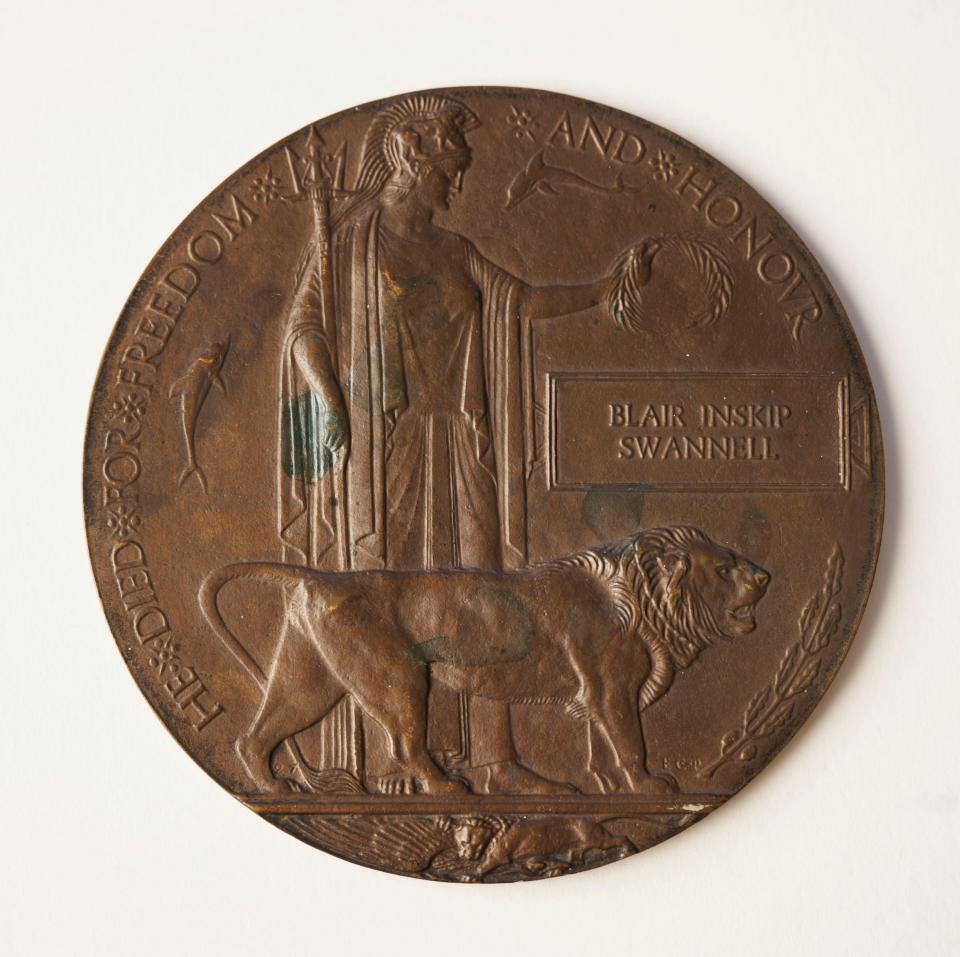
The ‘Dead Man’s Penny’ that was sent to the family following Blair Swannell’s death in action at Gallipoli in 1915 – Jamie Lorriman/Jamie Lorriman
‘It would be just wrong if they didn’t recognise him’
Robert Swannell first became aware of the full extent of his great uncle’s extraordinary exploits after attending the memorial service at Westminster Abbey to mark the 100th anniversary of the Gallipoli landings nine years ago, having been invited by the Australian high commissioner.
Since then, Swannell, the former chairman of Marks and Spencer, has been engaged in a vigorous campaign to ensure his great-uncle’s sacrifice and rugby legend is not “rubbed from history” but celebrated in a similar manner to the other player to have represented both the Lions and the Wallabies, Tom Richards.
“I think Blair would deserve the recognition if he was just an Englishman, but the fact that he was also somebody who died in an Australian infantry uniform makes it all the more poignant. So for them not to recognise him, I think, would be a travesty,” Swannell told Telegraph Sport.
“Tom Richards was a great guy, but he did nothing more astonishing, in fact, rather less, I would suggest, than Blair. And on top of that, Blair still has the most Test wins of any Lion in history, so he’s not just an incidental Lion either. From the Lions’ point of view, and the Australians’, it would be just wrong if they didn’t recognise him.”
Richards, an Australian who played against the Lions in 1904 and then for the tourists against South Africa six years later, was formally recognised when a trophy in his name was commissioned for the Lions tour of Australia in 2001 and presented to the series-winning captain John Eales, and to Alun Wyn Jones in Sydney 12 years later.
When the trophy was commissioned, it was thought that Richards had been the only player to have played for both teams. Swannell first challenged this in 2018 with Rugby Australia (RA) after listening to a keynote talk on the life of his great-uncle, given by Graham McKechnie, BBC Northampton’s sports editor, and Jon Cooksey, a military historian, at the annual meeting of the Gallipoli Association at the RAF Club in London.
His first request to the former RA chief executive Raelene Castle was for the trophy to be renamed as the Richards/Swannell Cup, having discovered the full extent of his great-uncle’s achievements, which included sailing to Australia in the merchant navy as a 15-year-old after joining the Thames Nautical Training College.
When this suggestion was rejected, he has since proposed an alternative option, to commission the “Blair Swannell Medal” for the outstanding player of the series between the two sides and hopes it can be introduced for next summer’s Lions tour of Australia.
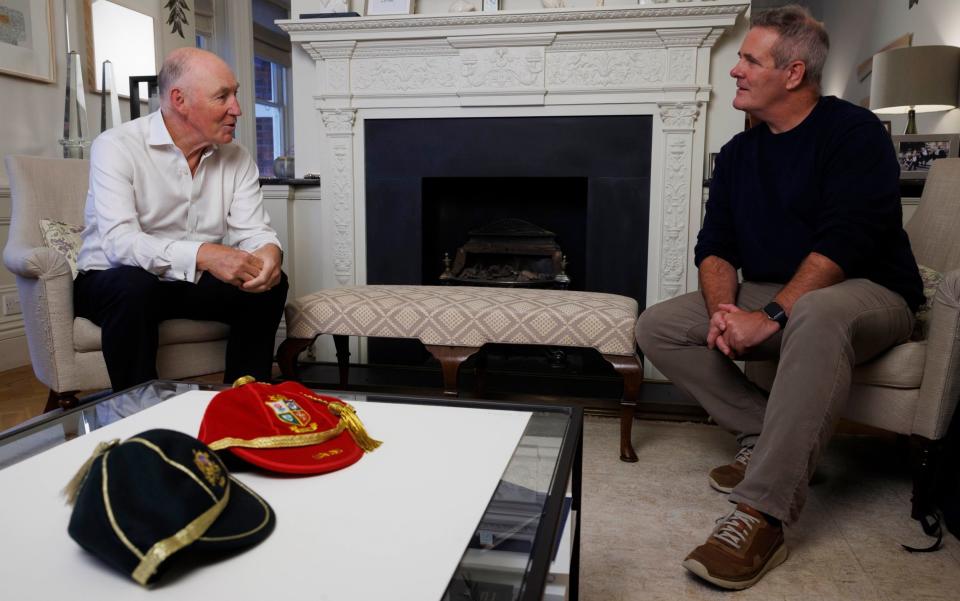
Robert Swannell chats to the Telegraph’s Gavin Mairs with Blair Swannell’s Lions and Australia caps in pride of place – Jamie Lorriman/Jamie Lorriman
“I started off suggesting that they should rename the trophy, but that was obviously going nowhere, so I changed direction and said, ‘Fine, keep the Tom Richards Cup for the winner of the series’, but name the medal for the best player of the series,” he added. “I’ve said that I will pay for it, so they can’t even say that it’s going to cost them anything. All they’ve got to do is judge it. I am waiting to hear back.”
A better Lions record than McBride
The treasure trove of artefacts that Swannell has assembled about his great-uncle shines a light on a life story from a Boy’s Own era of derring-do and explains his passion for the cause.
Born at Weston Underwood, Buckinghamshire, in 1875, Blair Swannell attended Spencer House School in Northampton and his rugby talent was spotted while playing junior rugby for Olney. He was invited to join Northampton in 1896, going on to make 116 appearances for them, primarily as a No 8.
A formidable forward who went by the nickname “Blair I” – his middle name was Inskip – Swannell soon became a crowd favourite at Northampton but a feared opponent because of his physicality.
He was tipped for an England call-up, having represented the East Midlands, but his wanderlust appears to have disrupted those plans. It was training on HMS Worcester, the Thames Nautical Training College, that ignited his passion for travel – and his first trip to Australia.

Blair Swannell the rugby international and later war hero – Swannell family/Swannell family
Still his reputation was such that he was called up for the British Isles tour of Australia in 1899 and made his debut in the second Test victory in Brisbane, becoming the first player from Northampton to represent the tourists.
He also appeared in victories in the third and fourth Tests. Another Lions tour followed in 1904, with Swannell playing in all three wins against Australia as well as a defeat by New Zealand in Wellington. His record of six Test victories for the Lions surpasses even the great Willie John McBride (five from 17 Tests) and is matched only by Froude Hancock (1891 and 1896).
At the turn of the century, Swannell sailed with his horse with the Buckinghamshire squad of the Imperial Yeomanry to fight in the Boer War as a commissioned officer, and on his return shipping records show that as well as several visits to Australia, he went to places such as the USA, Canada, Chile, Argentina and Uruguay. In 1903, Swannell embarked on a voyage from Nova Scotia to Tierra Del Fuego in Patagonia in search of gold. If the trip descended into farce, and certainly no gold was found, Swannell left behind a beautifully written journal of the voyage.
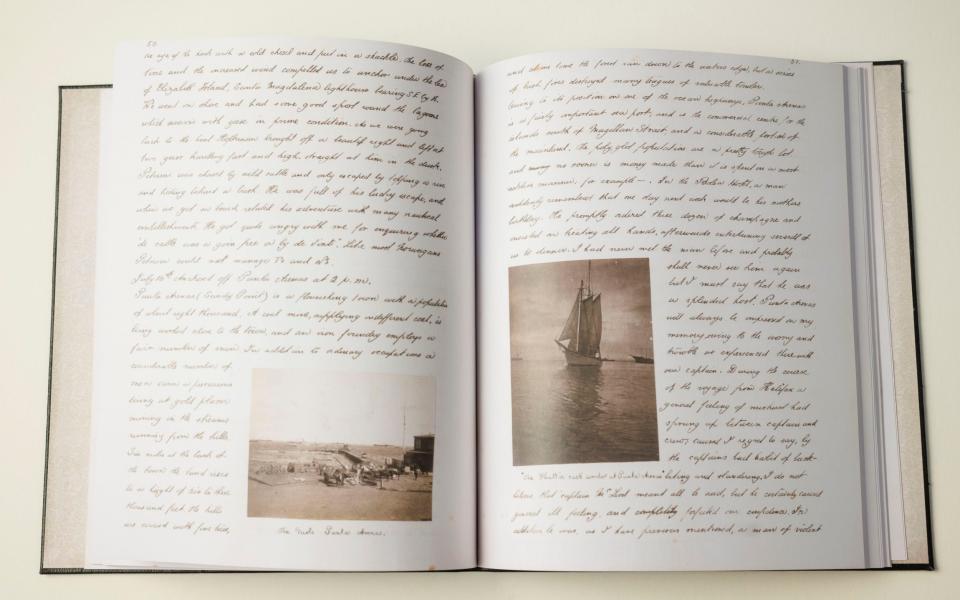
An album of memorabilia of Blair Swannell’s life that includes a letter informing his brother Billy of his sibling’s death in action – Jamie Lorriman/Jamie Lorriman
The second Lions tour in 1904 seemed to slake his thirst for travel and he then settled in Sydney, teaching and coaching rugby to the boys at the prestigious St Joseph’s College and continuing to play rugby, for New South Wales, Sydney District and Northern Suburbs. Coincidentally, the uncle of Robert Swannell’s son Will is a current rugby coach at St Joseph’s.
In 1905, Swannell made history again by winning selection to play for Australia in their first Test against New Zealand, making him Northampton’s first Australian international.
Reports suggest his pugnacious style of play was not always appreciated in his adopted homeland. Herbert Moran, who later captained Australia, said of Swannell that “his conception of rugby was one of trained violence”, a description the player himself vigorously denied.
But there were plenty of others who would testify their support for him and the loyalty and respect he commanded, on the pitch and later in the army.
A Sydney newspaper cutting described Swannell as “one of those daredevils of football who could give a knock and take a knock. He had no admiration for the man who ‘squealed’, and the only squealing he did himself was to warn the referee that if he did not put an end to dirty tricks, he would take the law into his own hands”.
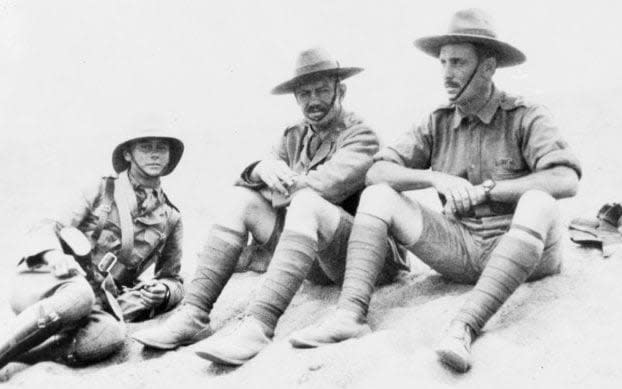
Major Blair Swannell (centre), who was fatally wounded at the Gallipoli landing, played rugby for the Lions and the Wallabies – Swannell family/Swannell family
‘He played the game like the decent fellow he was’
By the time war broke out in Europe in 1914, Swannell enlisted at the age of 39, just two years below the fighting age limit, and he was given a commission in the 1st Battalion of the Australian Infantry. Filling the rank of major of D Company, after training in Egypt he and his men were sent to Gallipoli, landing at the infamous Anzac Cove on April 25, 1915.
Swannell wanted his D Company to be first to attack but instead, as part of the third wave, were able to progress to a plateau called the Nek after climbing 300 feet. After a charge led by Swannell up the slopes of a hill they called Baby 700, the company was pinned down by a sniper.
As the officer in charge, Swannell was in the process of instructing his men how to respond to the threat, only to be killed by a shot to his forehead. His death “had a great effect on the lads who fought like demons afterwards. He was a grand chap”, recorded Private Bercharand, of D Company. “If I had to go into it again, I would go with more confidence if led by a man like him. Major Swannell was a gentleman and a sport and played the game like the decent fellow he was.”
Swannell’s body lay on the slopes of Baby 700 for the next four years until 1918, when, with the war over, his remains were gathered and buried in the cemetery at the hill’s summit.
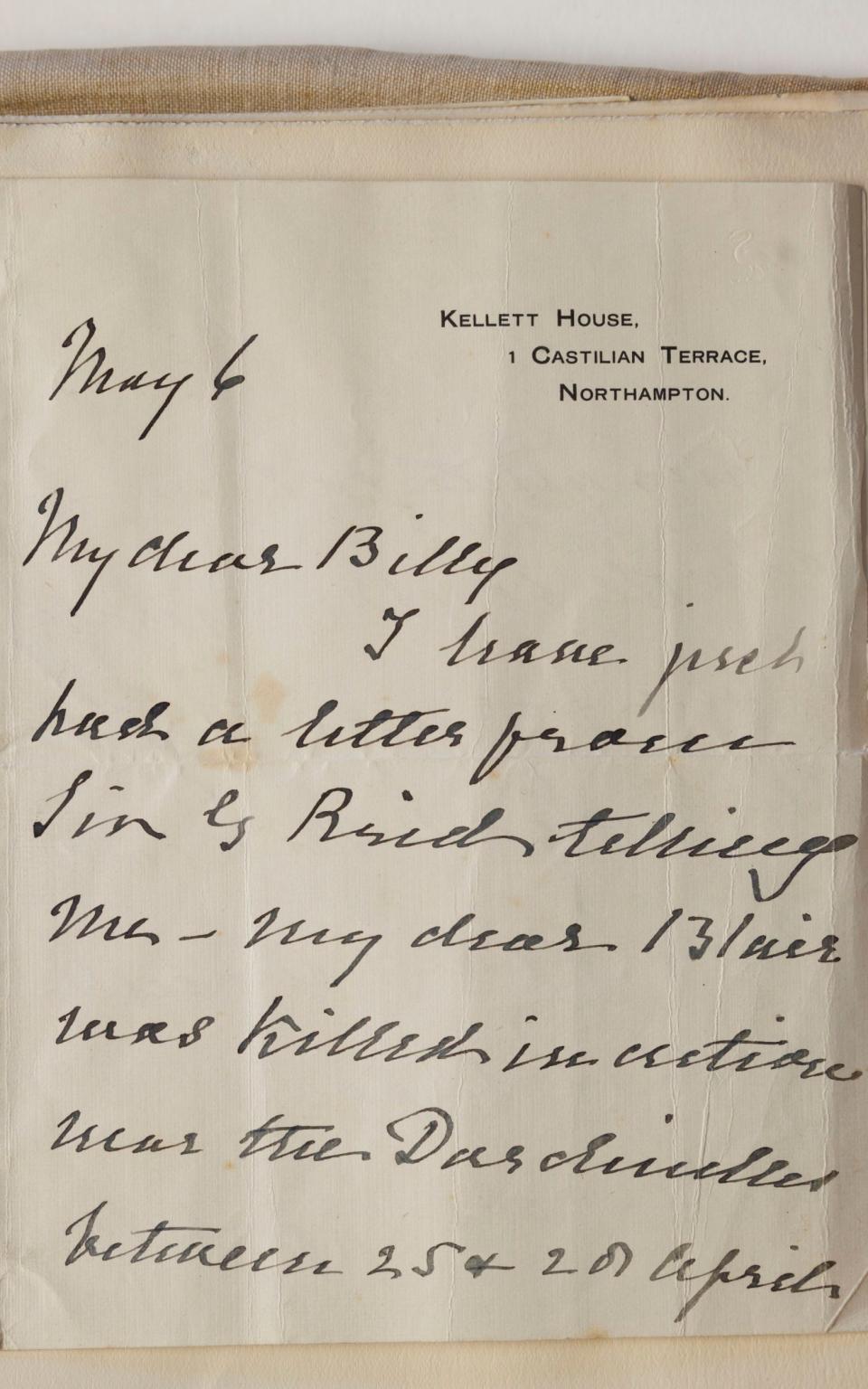
The handwritten letter, sent by the mother of Robert Swannell’s great-uncle, informing Blair’s brother Billy of his sibling’s death – Jamie Lorriman/Jamie Lorriman
Sitting in his London apartment, Robert Swannell reaches for an album that includes a handwritten letter. It is from his great uncle’s mother, informing his brother Billy, who was fighting in France at the time, of Swannell’s death.
It reads: “My dear Billy, I have just had a letter telling me my dear Blair was killed in action …I am quite calm …I am far more glad he is dead rather than mangled and wounded.”
“It was a different world, my great grandmother’s stoicism is remarkable, can you imagine someone writing that today?” adds Robert Swannell. “It was this sacrifice and poignant ending that got me on to this cause.
“It was just thinking that in a way Blair had been rubbed out of history that made me think, ‘This isn’t right’, and particularly as he was part of Australian history as well.
“I may not have every quality, but I am pretty relentless. I’ve been at this for a long time and I have been determined that by the time we get to next year something will have changed about it.”
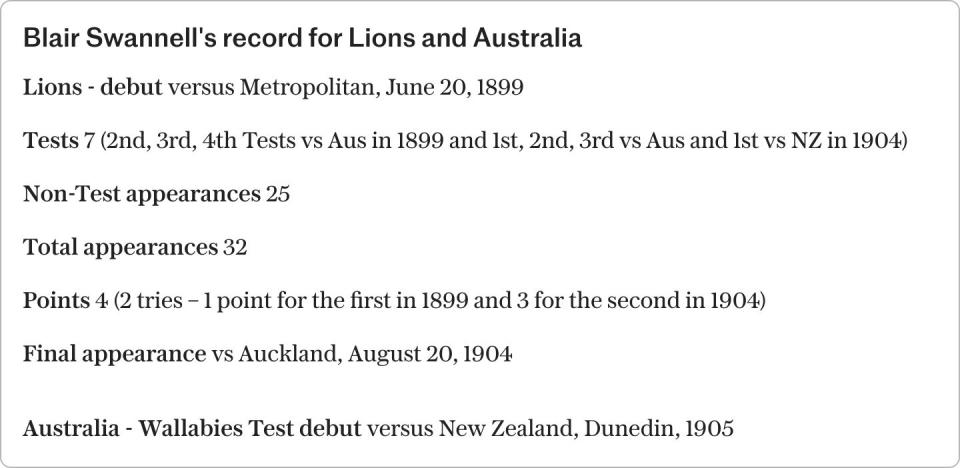
Broaden your horizons with award-winning British journalism. Try The Telegraph free for 3 months with unlimited access to our award-winning website, exclusive app, money-saving offers and more.
[ad_2]
Copyright for syndicated content belongs to the linked Source link

